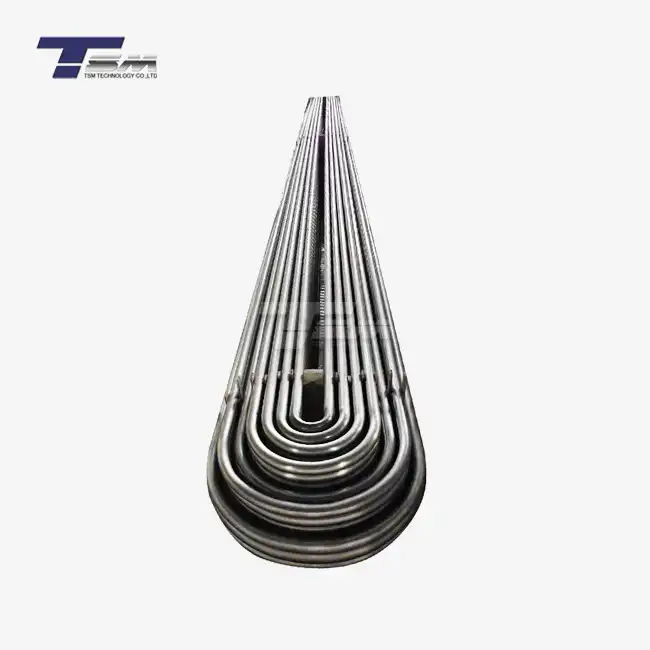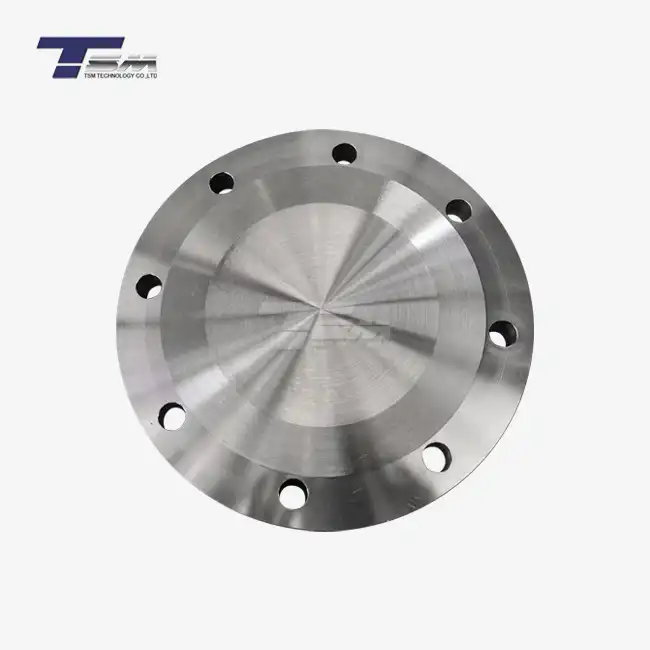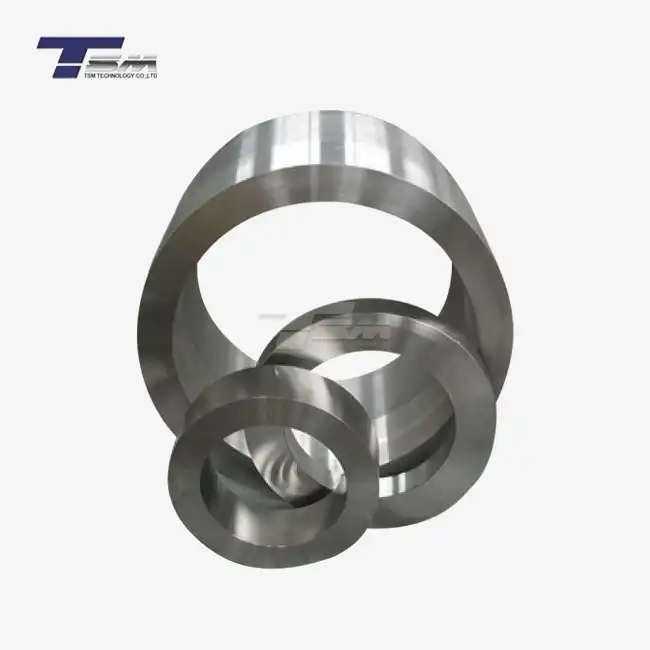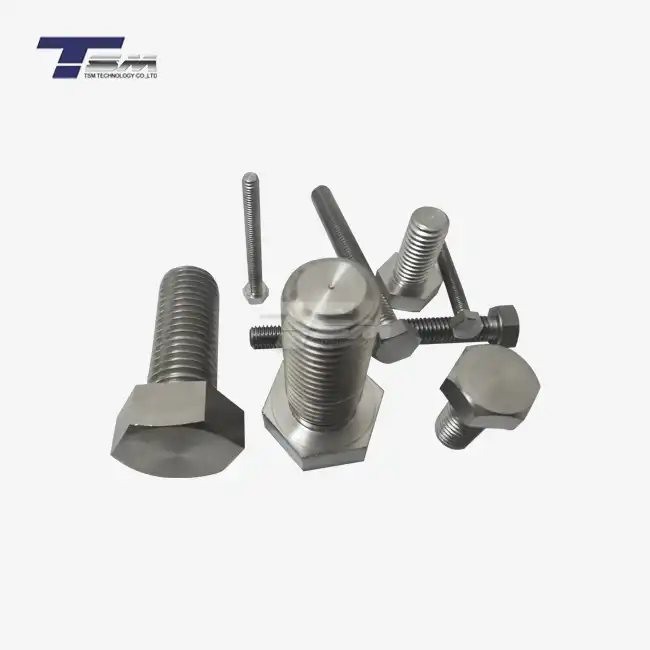Understanding Creep Resistance in Inconel 718
The Science Behind Creep Resistance
Creep resistance in Inconel 718 bar stock stems from its carefully engineered composition and microstructure. The alloy's primary strengthening mechanism relies on the precipitation of gamma double prime (γ") particles, which effectively impede dislocation movement within the crystal lattice. This phenomenon, coupled with solid solution strengthening from elements like molybdenum and niobium, contributes to the material's exceptional creep resistance.

The formation of these strengthening precipitates occurs during a controlled heat treatment process, which typically involves solution annealing followed by a two-step aging treatment. This procedure optimizes the distribution and size of the γ" particles, maximizing the alloy's creep resistance properties.
Factors Influencing Creep Behavior
Several factors influence the creep behavior of Inconel 718 bars:
- Temperature: As temperature increases, creep rate generally accelerates due to enhanced atomic mobility.
- Stress: Higher applied stresses lead to faster creep deformation.
- Grain size: Finer grain structures typically exhibit better creep resistance.
- Precipitate morphology: The size, distribution, and stability of strengthening precipitates play a crucial role in creep resistance.
Understanding these factors allows engineers to optimize the processing and application of Inconel 718 round bars for specific operating conditions.
Creep Mechanisms in Inconel 718
Creep in Inconel 718 occurs through various mechanisms, depending on the temperature and stress conditions:
- Dislocation creep: Dominant at higher stresses, involving the movement of dislocations through the crystal structure.
- Diffusional creep: Prevalent at lower stresses and higher temperatures, characterized by the diffusion of atoms along grain boundaries or through the crystal lattice.
- Grain boundary sliding: Becomes significant at very high temperatures, leading to relative movement between grains.
The superior creep resistance of Inconel 718 bar stock is attributed to its ability to resist these mechanisms through its unique microstructure and precipitate stability.
Applications Leveraging Creep Resistance of Inconel 718 Round Bars
Aerospace Industry
The aerospace sector extensively utilizes Inconel 718 round bars in various critical components due to their exceptional creep resistance. Jet engine parts, such as turbine discs, shafts, and casings, are manufactured from Inconel 718 bar stock to withstand the extreme temperatures and stresses encountered during flight. The material's ability to maintain its strength and dimensional stability under these conditions ensures the safety and reliability of aircraft engines.
Specific applications include:
- Turbine blades and vanes
- Exhaust systems
- Thrust reversers
- Fasteners for high-temperature zones
The use of Inconel 718 bars in these applications contributes to improved fuel efficiency, extended service life, and enhanced overall performance of aircraft engines.
Power Generation
In the power generation industry, Inconel 718 round bars find extensive use in gas turbines and steam turbines. The alloy's creep resistance is crucial for maintaining the structural integrity of components exposed to high temperatures and pressures over extended periods. Some key applications include:
- Turbine rotors and blades
- Compressor discs
- Bolting materials for high-temperature assemblies
- Heat exchanger tubing
The reliability and longevity of power generation equipment are significantly enhanced by incorporating Inconel 718 bar stock in these critical components.
Oil and Gas Industry
The oil and gas sector relies on Inconel 718 bars for various applications in harsh, corrosive environments. The material's creep resistance, combined with its excellent corrosion resistance, makes it ideal for use in:p>
- Downhole tools and equipment
- Subsea valves and fittings
- Wellhead components
- Drilling and completion tools
These applications often involve exposure to high temperatures, pressures, and corrosive fluids, where the creep resistance of Inconel 718 round bars ensures long-term reliability and safety of the equipment.
Optimizing Creep Resistance in Inconel 718 Round Bar Production
Heat Treatment Processes
The heat treatment of Inconel 718 bars plays a crucial role in optimizing their creep resistance. The standard heat treatment process typically involves:
- Solution annealing: Heating the alloy to temperatures around 980°C to 1010°C (1796°F to 1850°F) to dissolve precipitates and homogenize the microstructure.
- Two-step aging:
- First aging at 720°C to 760°C (1328°F to 1400°F) for 8 hours
- Cooling to 620°C to 660°C (1148°F to 1220°F) and holding for 8 hours
This carefully controlled process ensures the optimal formation and distribution of strengthening precipitates, maximizing the creep resistance of Inconel 718 bar stock. Variations in heat treatment parameters can be employed to tailor the properties for specific applications.
Microstructure Control
Achieving the desired creep resistance in Inconel 718 round bars requires careful control of the microstructure. Key factors include:
- Grain size: A fine, uniform grain structure generally enhances creep resistance.
- Precipitate size and distribution: Optimizing the size and spacing of γ" precipitates is crucial for maximizing creep resistance.
- Delta phase control: Minimizing the formation of delta phase at grain boundaries helps maintain the alloy's strength at high temperatures.
Advanced processing techniques, such as thermo-mechanical processing and controlled cooling rates, are employed to achieve the desired microstructural characteristics in Inconel 718 bars.
Quality Control and Testing
Ensuring consistent creep resistance in Inconel 718 round bar production requires rigorous quality control measures and testing protocols. These may include:
- Non-destructive testing: Ultrasonic and eddy current inspections to detect internal defects or inconsistencies.
- Microstructural analysis: Metallographic examination to verify grain size, precipitate distribution, and phase composition.
- Mechanical testing: Tensile, hardness, and impact tests to confirm material properties.
- Creep testing: Long-term creep tests under various stress and temperature conditions to validate creep resistance.
Implementing comprehensive quality control measures ensures that Inconel 718 bar stock consistently meets the stringent requirements for creep-resistant applications across various industries.
Conclusion
The exceptional creep resistance of Inconel 718 round bars makes them indispensable in high-temperature, high-stress applications across aerospace, power generation, and oil and gas industries. This remarkable property stems from the alloy's unique composition, optimized microstructure, and carefully controlled processing techniques. By leveraging advanced heat treatment processes, microstructure control, and rigorous quality assurance measures, manufacturers can produce Inconel 718 bar stock that consistently meets the demanding requirements of critical applications. As industries continue to push the boundaries of material performance, the creep resistance of Inconel 718 bars remains a key factor in enabling technological advancements and ensuring the reliability of crucial components in extreme environments.
Contact Us
For more information about our high-quality Inconel 718 round bars and other superior alloy products, please contact TSM TECHNOLOGY at info@tsmnialloy.com. Our team of experts is ready to assist you in finding the perfect solution for your specific application needs.



